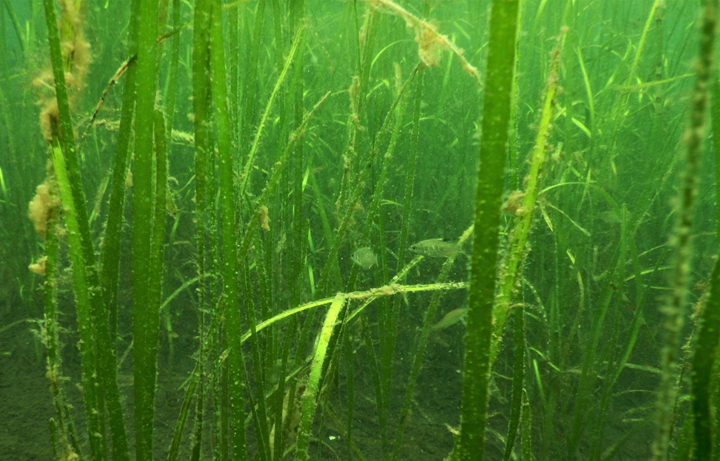The importance of British Columbia’s Eelgrass
Categories:
Stephen Ban, Protected Areas Applied Ecologist, BC Parks
Every now and then in the world of marine conservation, some new idea or topic catches scientists’ attention and takes the academic world by storm. Recently, that topic has been “Blue Carbon.” As is often the case, our knowledge about the world’s oceans lags behind our knowledge about how things work on land, and the concept of blue carbon is no different. To understand what it is, first we need to understand a bit about what the carbon cycle is and how it works.
Until recently (at least in geological terms), the Earth’s carbon cycle was well-balanced, with carbon dioxide (CO2) emissions from natural sources being balanced by uptake from other natural sources, such as forests. This is why the CO2 concentration in Earth’s atmosphere has been relatively steady – until now. Since humankind started burning fossil fuels in mass quantities, we have been releasing ancient stores of carbon that would otherwise have remained locked away. Any system that grabs CO2 from the atmosphere and stores it, so it doesn’t go back into the atmosphere, is called a carbon sink. These carbon sinks are often included when calculating carbon emissions offsets for development projects or even for entire countries. However, despite the fact that we now know that over 80%of the world’s carbon gets cycled through the oceans, we don’t have a very good accounting of exactly where – or how much – carbon is stored in specific areas. We estimate that about half of all the carbon stored in the oceans is found in coastal habitats, such as mangroves, tidal marshes, and seagrasses.
Here in BC, we don’t have mangroves, but we do have tidal marshes and seagrasses in abundance! Globally, seagrasses are being lost at about 1.5% per year. Eelgrass is one of the most prominent seagrasses in BC, growing along 25-35% of BC’s coast. Unfortunately, eelgrass is threatened by a number of activities, including runoff from land, boats dropping and dragging anchors, and climate change. Besides being a carbon sink, eelgrass beds are also extremely important as feeding and nursery habitats for many animals. It also protects coastlines from erosion, and helps to reduce sediment in the water.
Eelgrasses can be found in many BC Parks, including Desolation Sound and Burgoyne Bay Provincial Park (Salt Spring Island). However, because eelgrass tends to grow in the same places that boaters like to anchor (sheltered, shallow, soft bottom), areas of concentrated boat anchoring may pose an ongoing threat. In order to assess this risk, and to make recommendations for the future protection of eelgrass, BC Parks has been partnering with non-governmental organizations such as SeaChange and academic institutions such as UBC and UVic to do more research on the coverage of eelgrass within our parks, as well as restoring lost and damaged eelgrass habitat. However, at the heart of protecting our oceans, is all of us – assessing our behaviours and lowering our negative impact.
To learn more about seagrass and seagrass conservation, visit seagrassconservation.org
To find out more about BC Parks’ conservation research projects, visit https://bcparks.ca/partnerships/living-labs/ and https://bcparks.ca/licence-plates/

Commenting has been disabled temporarily.




